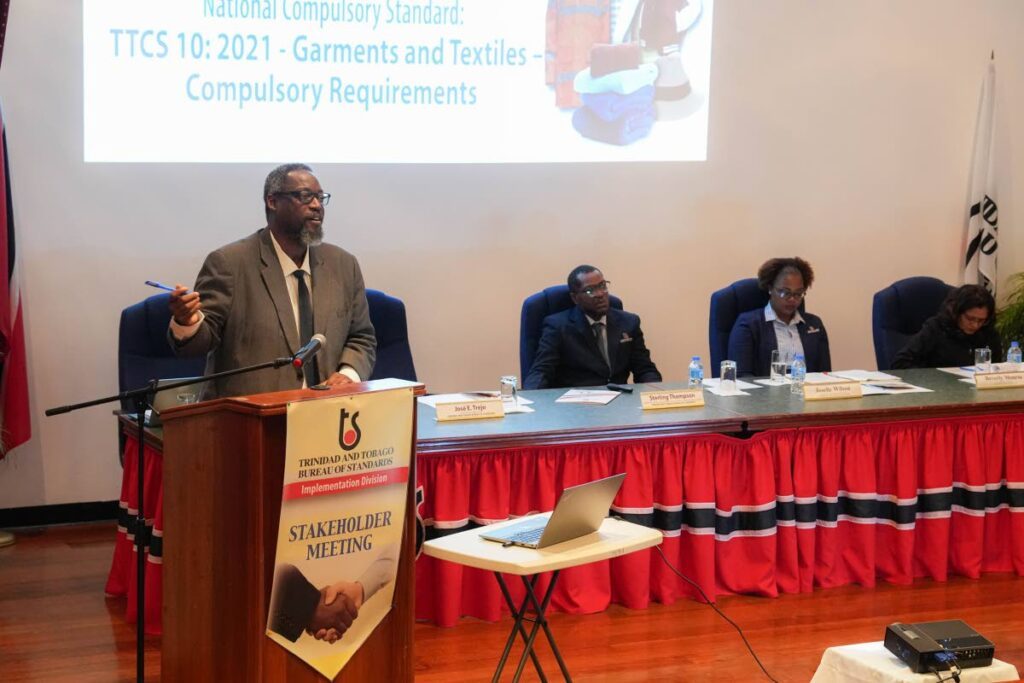Business
Shweta Sharma

GARMENTS and textiles produced and sold locally must now meet particular standards in their labelling and chemical composition, the Trinidad and Tobago Bureau of Standards (TTBS) has announced.
The TTBS recently launched a national compulsory standard (TTCS 10:2021 Garments and Textiles – compulsory requirements) after hosting a stakeholders’ consultation last week with manufacturers, importers and distributors of garments and textiles.
The standard, the TTBS said, ensures consumers have access to safe, high-quality products.
Speaking at the consultation, TTBS executive director Jose Trejo said the TTBS is “committed to promoting and enforcing standards that ensure the safety and quality of products in our nation.”
Trejo encouraged stakeholders to provide feedback and collaborate with the TTBS to “achieve our shared goals as we continue building a society that is guided by standards and quality.”
The standard includes particular requirements for chemicals such as formaldehydes and azo dyes, which have been proven to have adverse effects on health if present in high levels.
The standard also establishes guidelines for labelling and product classification, which includes labelling requirements and a point system to classify textiles as seconds, irregular or slightly imperfect.
“By providing clear labelling and information,” the TTBS said, “consumers can make informed decisions about the products they buy, ensuring they get the quality they deserve and value for money.”
The TTBs its implementation division has done inspections on garments and textiles products over the past year in which it identified 81 non-conformities from 527 inspections.
“TTBS aims to decrease the percentage of non-complying products as we move forward in the enforcement (of the new standard).
“Imported shipment of garments and textiles are subject to inspection, sampling, and testing to determine conformance to the requirements of this standard,” the statement said.
“Locally manufactured items will be inspected during market surveillance activities. Once all results are satisfactory, goods will be released for sale or distribution.”
